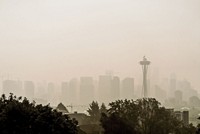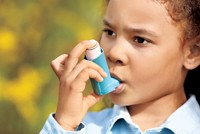Advertisement
Grab your lab coat. Let's get started
Welcome!
Welcome!
Create an account below to get 6 C&EN articles per month, receive newsletters and more - all free.
It seems this is your first time logging in online. Please enter the following information to continue.
As an ACS member you automatically get access to this site. All we need is few more details to create your reading experience.
Not you? Sign in with a different account.
Not you? Sign in with a different account.
ERROR 1
ERROR 1
ERROR 2
ERROR 2
ERROR 2
ERROR 2
ERROR 2
Password and Confirm password must match.
If you have an ACS member number, please enter it here so we can link this account to your membership. (optional)
ERROR 2
ACS values your privacy. By submitting your information, you are gaining access to C&EN and subscribing to our weekly newsletter. We use the information you provide to make your reading experience better, and we will never sell your data to third party members.
Pollution
Wildfire smoke linked to early deaths
A recent study estimates that more than 50,000 adults died prematurely in California over 11 years due to exposure to wildfire smoke
by Priyanka Runwal
June 18, 2024
| A version of this story appeared in
Volume 102, Issue 19

In the US—particularly in the West—climate change is increasing the frequency and intensity of wildfires. Smoke produced by these fires has been linked to reduced lung function, cognitive decline, increased risk of heart attacks, and early deaths. A recent study estimates that from 2008 to 2018, exposure to air pollutants called fine particulate matter (PM2.5) in wildfire smoke resulted in 52,500–55,700 premature deaths in California (Sci. Adv. 2024, DOI: 10.1126/sciadv.adl1252). The researchers calculated a potential economic benefit of between $432 billion and $456 billion from reducing such mortality risks.
“The numbers definitely surprised us,” says Rachel Connolly, an environmental health researcher at the University of California, Los Angeles, and lead author of the study, in an email. “These findings are a call to action for forest management and climate mitigation.”
Unlike many previous studies, the work by Connolly and her colleagues distinguished PM2.5 derived from wildfires from that from other sources such as traffic or industrial processes. “It’s a good approach to try to isolate the PM2.5 sources,” says Juan Aguilera, an environmental health researcher at the University of Texas School of Public Health in El Paso who wasn’t involved in the study. “How you tackle wildfire mitigation is totally different [to approaching pollution] from industry and traffic.”
Next, Connolly’s team estimated premature deaths linked to wildfire smoke exposure among people over 25 years of age who died before reaching age 75. But Aguilera notes large variations in the team’s estimates of premature deaths linked to wildfire smoke, which the study also acknowledges. The PM2.5 concentrations at which wildfire smoke exposure can trigger acute and chronic illnesses resulting in death aren’t clearly established. Still, the estimates are staggering, he says.





Join the conversation
Contact the reporter
Submit a Letter to the Editor for publication
Engage with us on Twitter